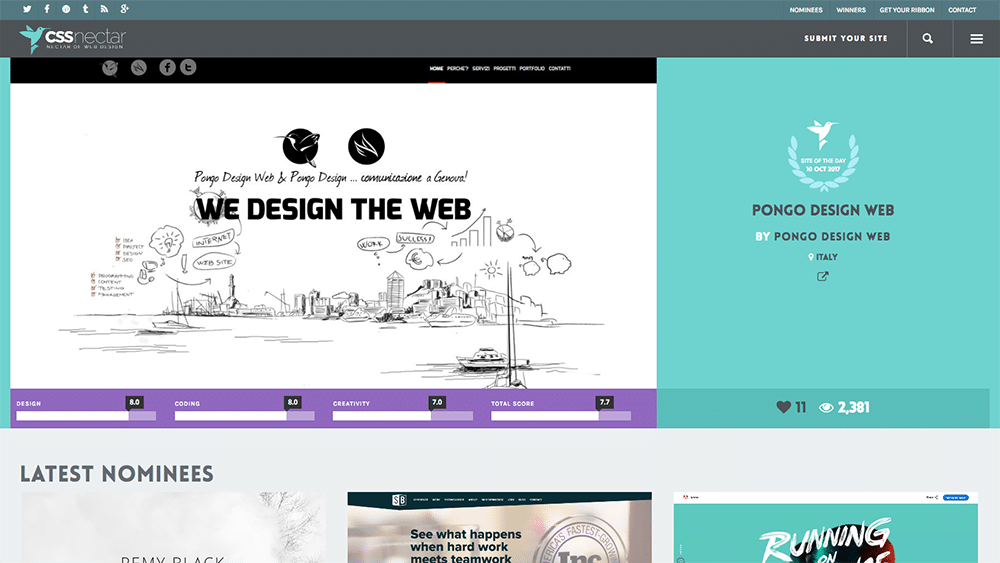Proven Techniques for Enhancing Your Site through Superior Web Design
Proven Techniques for Enhancing Your Site through Superior Web Design
Blog Article
The Comprehensive Guide to Crafting Visually Appealing and Useful Website Design That Fulfills Customer Requirements
In today's digital landscape, the relevance of crafting internet designs that are both visually attractive and useful can not be overemphasized. By prioritizing user-centered design concepts, developers can produce experiences that not only draw in however likewise preserve user interest - web design.
Recognizing User-Centered Style
At the heart of efficient web layout lies the principle of user-centered layout, a philosophy that focuses on the demands, choices, and habits of individuals throughout the advancement procedure. This technique includes comprehensive study to comprehend the target audience, guaranteeing that the end product resonates with its designated users. By integrating customer responses at every phase, developers can develop user interfaces that are not just aesthetically enticing but likewise practical and instinctive.
User-centered layout highlights compassion, requiring developers to tip right into the users' shoes and consider their perspectives. Techniques such as user identities, journey mapping, and usability screening are utilized to identify pain factors and possibilities for improvement. This repetitive process enables continuous refinement, as designers adjust to advancing user demands and technological improvements.
Incorporating user-centered style results in boosted customer contentment and involvement, eventually resulting in greater conversion prices and brand name loyalty. It promotes a collaborative environment where stakeholders, consisting of developers, customers, and developers, interact to achieve a shared vision. By placing individuals at the leading edge of the style procedure, companies can develop websites that not only meet business goals however also offer meaningful and fulfilling experiences for customers.
Key Concepts of Visual Style
Efficient visual layout offers as the structure for developing easy to use and appealing internet sites. It encompasses a number of vital principles that direct developers in crafting visually pleasing and functional interfaces.
First, balance plays an essential function in attaining visual consistency. Designers should disperse components equally across the design to stay clear of frustrating individuals. This can be achieved with in proportion or unbalanced layout strategies.
Following, comparison enhances readability and attracts focus to crucial elements. By making use of varying colors, dimensions, or forms, designers can develop centerpieces that direct individuals through the material.
Furthermore, placement is vital for organizing info. Constant alignment of text and pictures promotes a clean layout, improving overall navigation and customer experience.
Proximity likewise adds to visual quality. Organizing relevant products with each other help individuals in comprehending the partnership between various elements, making the interface extra intuitive.
Finally, consistency in design aspects, such as designs, fonts, and shades, enhances brand name identification and helps individuals navigate the site a lot more easily. By incorporating these vital principles of aesthetic design, web designers can develop user interfaces that are not only aesthetically appealing however likewise functional and user-centered.
Importance of Responsive Style
Receptive style is a crucial aspect of contemporary web development, making certain that internet sites function seamlessly across a selection of gadgets and display sizes. As the internet landscape progresses, the variety of devicesâEUR" ranging from smart devices to tablet computers and desktop computer computersâEUR" demands a design strategy that fits all customers.
Implementing responsive design enables for a flexible format that automatically adjusts based on the individual's display dimensions. This versatility not just enhances access but also enhances use, as individuals can navigate and connect with the website easily, no matter their gadget.

In addition, receptive design reduces the need for keeping several variations of a website, improving updates and content administration. This performance converts right into cost savings and an extra natural brand experience across platforms.
Enhancing User Experience
Customer experience (UX) is a crucial part of internet design, influencing exactly how visitors connect with a website and view its worth. A well-crafted UX guarantees that individuals can navigate with ease, find details quickly, and accomplish their objectives effectively. The style must think about the individual's trip, from the minute they arrive at the website to the conclusion of their preferred action, whether that be purchasing, enrolling in an e-newsletter, or accessing information.
Secret elements that improve UX consist of clear navigating, responsive layouts, and appealing aesthetic web content. Consistency in layout elements such as shades, switches, and typefaces fosters familiarity, making the web site feel natural. In addition, enhancing load times web design is vital; users are much less most likely to remain on a site that is slow to respond.

Checking and Iterating Styles
Checking and iterating designs are fundamental processes that follow the preliminary creation of a site, guaranteeing that the individual experience continues to be at the leading edge of any type of modifications. These stages include collecting customer feedback, analyzing design performance, and making informed adjustments to boost use and engagement.
Efficient screening can take various kinds, consisting of use screening, A/B screening, and individual studies. Use testing permits designers to observe real users as they interact with the site, identifying pain factors and locations for enhancement - web design. A/B screening, on the various other hand, contrasts two versions of a style element to establish which executes better, supplying measurable data to guide decisions. User surveys can offer qualitative insights, catching user views and preferences.
When screening is finished, the version stage starts. This includes refining the style based on the gathered information, prioritizing modifications that align with individual requirements and business objectives. Continuous version cultivates a flexible style method, where the site evolves in feedback to customer habits and comments. By committing to extensive testing and model, designers can produce a site that not only fulfills aesthetic standards yet additionally provides a smooth and enjoyable individual experience.

Conclusion
Finally, reliable web style demands the combination of user-centered concepts, vital visual design components, and receptive structures to produce engaging interfaces. By focusing on customer requirements and carrying out continual screening and version, designers can improve their creations to improve general contentment. The dedication to these methods not only promotes an aesthetically attractive helpful hints aesthetic yet additionally makes sure performance across diverse devices, inevitably contributing to a favorable user experience and increased involvement.
By focusing on user-centered layout principles, developers can create experiences that not just attract yet likewise preserve user passion.At the heart of reliable web layout lies the principle of user-centered design, an ideology that prioritizes the needs, preferences, and behaviors of customers throughout the development process. By positioning individuals at the leading edge of the layout process, organizations can produce internet sites that not only meet company objectives but also supply fulfilling and significant experiences for users.
By focusing on customer demands and choices, web designers can develop experiences that are not just aesthetically appealing yet additionally practical, ultimately fostering individual contentment and commitment.
Customer surveys can provide qualitative understandings, recording user views and choices.
Report this page